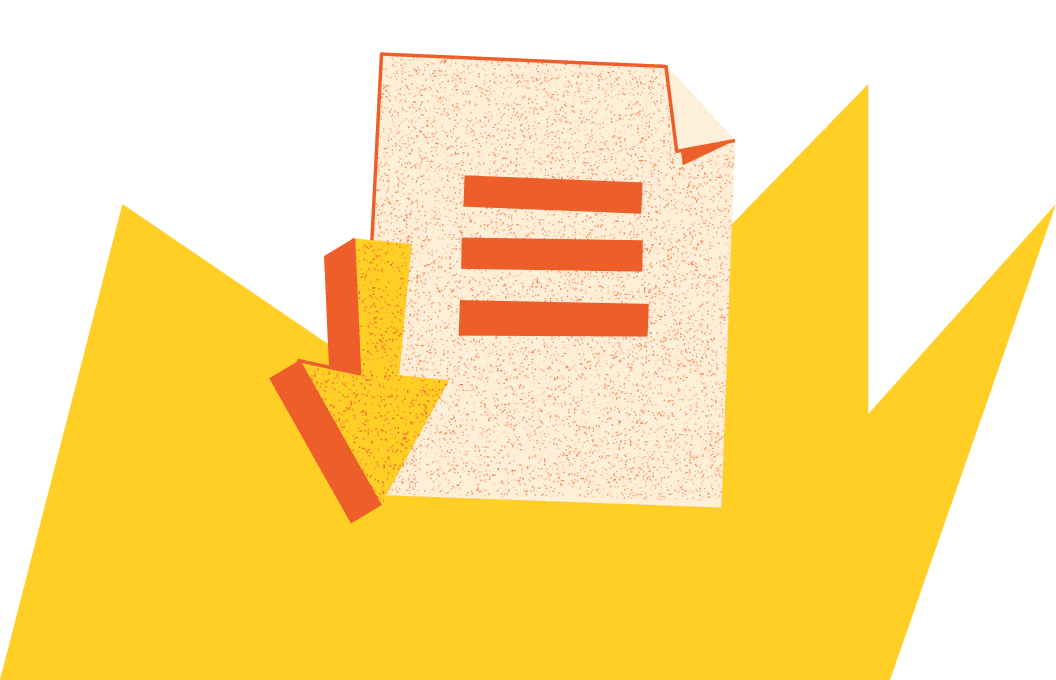Template
Employee Offboarding Checklist Template (for Individual Contributors and Managers)
Global HR

Get the resource for free
Offboarding is more than just a farewell—it’s a critical process that, if mishandled, can expose your organization to serious risks. A poorly structured offboarding process may lead to data breaches, compliance violations, and legal liabilities due to incomplete paperwork or mismanaged benefits.
Beyond the legal and financial pitfalls, inadequate offboarding can leave crucial projects in limbo, disrupt team morale, and cause the loss of valuable institutional knowledge.
Our offboarding checklist template covers everything you need for effective offboarding processes—with custom versions for individual contributors and managers. Save time, reduce risks, and leave everyone feeling valued.
Employee offboarding checklist template overview
Designed for HR professionals, team leads, and managers, this free resource includes two versions—one for individual contributors and one for managerial roles—so you can easily tailor it to different scenarios. The two checklists cover all the essential phases of an offboarding process:
- Paperwork and compliance: Resignation letters, final pay, benefits, and NDA reviews
- Exit interviews and feedback: Collect insights to improve retention and workplace culture
- Knowledge transfer: Prevent lost information and maintain project continuity.
- Asset recovery and access control: Protect company property and sensitive data.
- Farewell and alumni relations: End things on a positive note to preserve goodwill.
Additionally, you will find brief introductions explaining key risks, considerations, and best practices for each phase of the offboarding process. Additionally, all the to-dos in the checklists clearly indicate which part should own the task (HR, departing employee, supervisor, IT, etc.).
How to use this offboarding checklist template
Follow these guidelines for a consistent, efficient, and positive offboarding experience that benefits both your organization and the departing employee:
- Download and customize: Get the template and adapt each phase to match your organization’s policies and culture.
- Involve key stakeholders: Work with HR, IT, Legal, direct supervisors, and the departing employee to ensure every task is covered.
- Follow the phases: The template is broken down into clear steps—from preparing paperwork to conducting exit interviews and revoking system access.
- Gather feedback: Use exit interviews to gain insights that can improve your company culture and reduce future turnover.
- Iterate and improve: After each offboarding, refine your process based on what went well and what could be better.
Don’t let an unstructured offboarding process put your company at risk—prepare to safeguard your business and maintain a positive reputation with a clear, comprehensive strategy.
Download our free offboarding template and get immediate access to a proven system that ensures no detail is overlooked.
FAQs
What is the offboarding process in HR?
The offboarding process in HR refers to the structured steps taken when an employee leaves a company, ensuring a smooth transition for both the departing employee and the organization. This process includes revoking the employee’s access to company systems, collecting company property like laptops and access cards, completing paperwork, and facilitating knowledge transfer to team members. A well-managed offboarding experience leaves a lasting impression that can impact the employer brand and future relationships with former employees.
What is an employee offboarding policy?
An employee offboarding policy is a formal guideline that outlines the steps an organization must follow when handling an employee’s departure. It covers legal compliance, the return of company assets, deactivation of systems access, conducting an exit survey, and ensuring a fair final paycheck. A clear policy helps maintain a positive employee experience and protects institutional knowledge from being lost.
Is offboarding the same as termination?
No, offboarding is the broader process of managing an employee’s departure, whether voluntary (resignation, retirement) or involuntary (termination, layoffs). Termination, on the other hand, specifically refers to when an employer ends an employee’s contract, often requiring legal considerations such as severance pay and non-disclosure agreements. Regardless of the reason, a professional offboarding experience ensures that the employee leaves on good terms when possible.
Which procedures should be included when offboarding an employee?
A comprehensive offboarding process should include:
- Notifying the HR department: The HR team initiates the offboarding steps
- Exit documentation: The employee submits a letter of resignation, and HR prepares the necessary paperwork
- Knowledge transfer: The departing employee documents key tasks for new employees or successors
- System deactivation: Revoke permissions and access to email, databases, and software
- Return of company property: Collect laptops, credit cards, and access cards
- Final paycheck and benefits processing: Ensure correct final pay, including outstanding bonuses or unused leave
- Exit survey: Gather feedback to improve the company’s employee retention strategy
How do you begin the employee offboarding process?
The HR department initiates the offboarding process once they receive an official letter of resignation or termination notice. First, they schedule an exit meeting, discuss final work responsibilities, and plan the handover of duties to other team members. IT is informed to revoke systems access, and Finance prepares the final paycheck. If handled well, this process contributes to a positive offboarding experience and maintains the organization’s employer brand.
How long does it take to offboard an employee?
The offboarding process typically takes two to four weeks, depending on the role and responsibilities of the exiting employee. Some steps, like revoking systems access and collecting company property, can be completed on the employee’s last day, while others, like knowledge transfer and final payroll processing, may take additional time.
What are the risks of offboarding?
Poor offboarding can lead to several risks, including:
- Data security threats: If an exiting employee retains systems access, they could misuse company information
- Loss of institutional knowledge: Without proper knowledge transfer, new hires may struggle to fill the role
- Reputational damage: A negative offboarding experience can hurt the company’s employer brand and discourage future employees from joining
- Legal issues: Failure to process final pay correctly or enforce non-disclosure agreements can lead to disputes
To mitigate these risks, companies should automate and document their offboarding process.
What is the respectful way of offboarding an employee whom the organization terminated?
To ensure a respectful offboarding experience for a terminated employee:
- Communicate clearly: Provide a direct but compassionate explanation for the decision
- Ensure confidentiality: Maintain professionalism to protect both the employee and the company
- Offer transition support: Assist with references, career counseling, or boomerang hiring opportunities if applicable
- Handle final steps promptly: Process the final paycheck, benefits, and paperwork without delay
- End on good terms: Even in difficult situations, keeping the door open for future professional interactions benefits both parties
What is an employee exit checklist?
An employee exit checklist ensures that all necessary steps are completed when an employee leaves. It includes:
- Resignation or termination letter received
- Final pay and benefits reviewed
- Knowledge transfer completed
- Company assets returned (laptops, access cards, credit cards)
- Systems access revoked
- Exit survey conducted
Using a checklist helps human resources teams manage a consistent and smooth offboarding process.
What paperwork is needed when an employee quits?
When an employee leaves, essential paperwork includes:
- Letter of resignation: Official notice from the employee
- Final paycheck statement: Details of last salary and benefits
- Non-disclosure agreements: If applicable, to protect company information
- Exit survey: Gathers valuable insights about the employee’s experience
- Benefits and insurance documents: Clarifies continuation options.
Proper documentation helps ensure compliance and a smooth transition.
What should be included in a termination packet?
A well-prepared packet ensures the offboarding process is handled legally and professionally. A termination packet typically contains:
- Official termination letter: Outlines the reason and effective date
- Final paycheck details: Specifies wages, bonuses, and accrued leave
- Severance agreement (if applicable): Defines any additional compensation
- Non-disclosure and non-compete agreements: Protects company information
- Exit interview form: Allows for valuable insights into the employee experience





